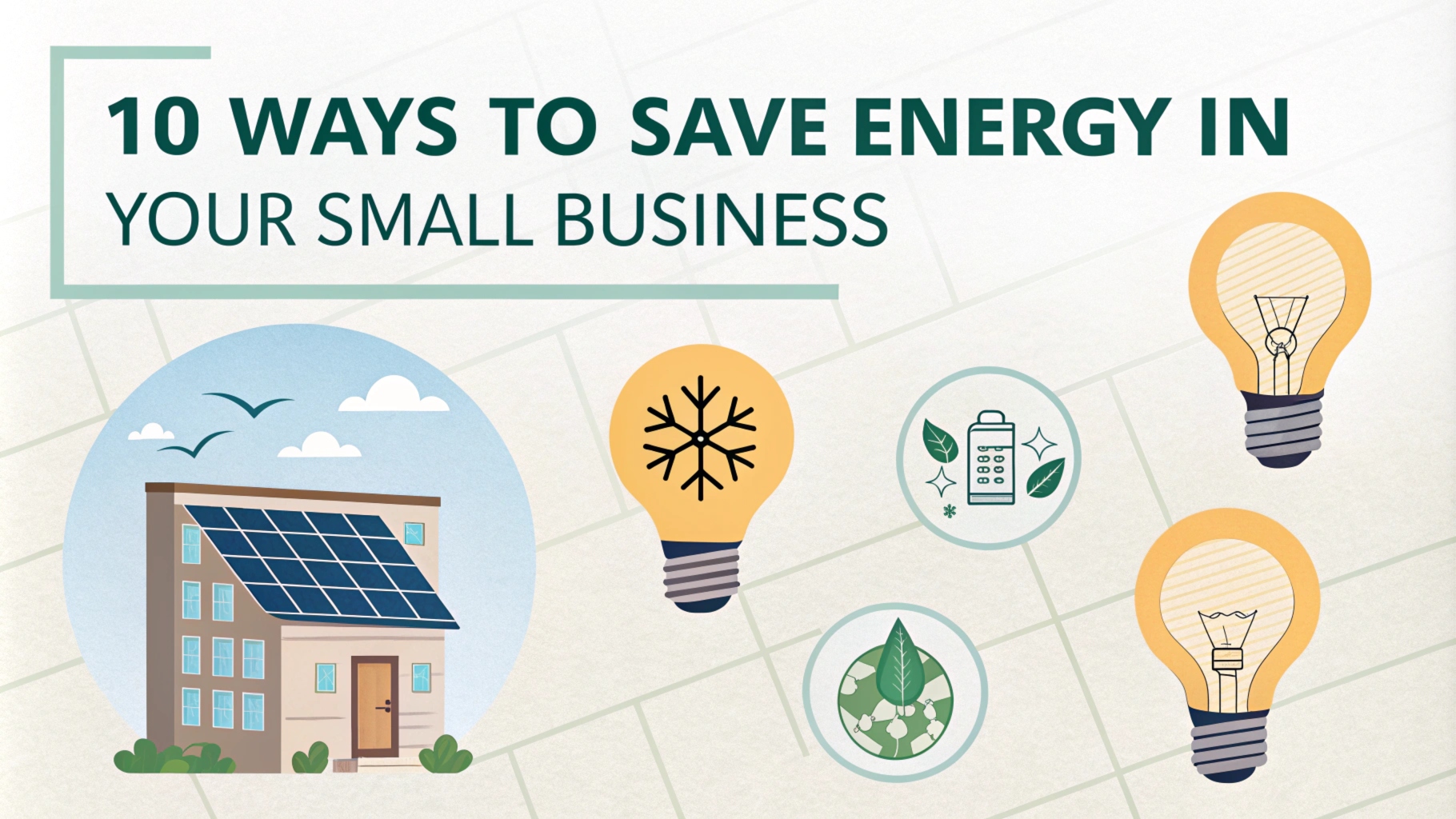Running a small business comes with many challenges, but one area where you can gain significant savings is in energy consumption. Lowering your energy usage not only reduces costs but also contributes to a more sustainable future. Whether you’re looking to cut down on overhead expenses or make your business greener, implementing energy-saving strategies can have a big impact. Here are 10 practical ways to save energy in your small business.
1. Switch to LED Lighting
Lighting accounts for a substantial portion of a business’s electricity bill. By replacing traditional incandescent bulbs with LED lights, you can drastically cut down on energy use. LED bulbs use up to 75% less energy and last up to 25 times longer than traditional bulbs. Additionally, consider installing motion sensors or timers to ensure lights are only on when needed.
- Tip: Use natural light whenever possible by opening blinds and rearranging workspaces to maximize sunlight.
2. Optimize Your Heating and Cooling Systems
Heating, ventilation, and air conditioning (HVAC) systems are major energy consumers. Simple maintenance tasks like regularly changing air filters and scheduling routine inspections can improve efficiency. Programmable thermostats are also a smart investment, allowing you to set temperatures based on business hours and occupancy.
- Tip: Set your thermostat a few degrees lower in winter and higher in summer to reduce energy consumption.
3. Unplug Idle Electronics
Many office devices continue to draw power even when they’re turned off. This phenomenon, known as “phantom power” or “vampire energy,” can add up over time. Make it a habit to unplug electronics like chargers, printers, and microwaves when not in use, or use power strips to turn off multiple devices at once.
- Tip: Invest in smart plugs that automatically cut off power to idle devices.
4. Invest in Energy-Efficient Office Equipment
When it’s time to upgrade office equipment, opt for energy-efficient models. Look for the Energy Star label, which indicates that the product meets energy-saving guidelines set by the U.S. Environmental Protection Agency. Energy-efficient computers, printers, and appliances can significantly reduce your office’s electricity usage.
- Tip: Enable power-saving modes on computers and monitors, and set them to sleep mode after periods of inactivity.
5. Conduct an Energy Audit
An energy audit is a thorough assessment of how your business uses energy. It helps identify areas where you can save. Many utility companies offer free or low-cost energy audits for small businesses. Alternatively, you can hire a professional to conduct a more detailed analysis.
- Tip: Use the audit results to create an action plan for reducing energy consumption in specific areas.
6. Use Smart Power Management Systems
Automating your office’s energy use can lead to substantial savings. Smart power management systems allow you to control lighting, heating, and cooling remotely. You can also set schedules for when equipment should be powered down, which is especially useful for businesses that operate on irregular schedules.
- Tip: Consider installing occupancy sensors in low-traffic areas like restrooms and storage rooms to automatically turn off lights when no one is around.
7. Improve Insulation and Seal Drafts
Energy efficiency isn’t just about the equipment you use; it’s also about keeping your workspace well-insulated. Poor insulation can lead to heat loss in winter and excessive heat gain in summer, making your HVAC system work harder. Seal windows and doors with weatherstripping or caulking to prevent drafts.
- Tip: Consider upgrading to double-glazed windows for better insulation.
8. Encourage Energy-Saving Practices Among Employees
Your team plays a crucial role in your energy-saving efforts. Educate employees about the importance of energy conservation and encourage simple habits like turning off lights when leaving a room, powering down computers at the end of the day, and using natural light.
- Tip: Hold a monthly “Green Day” where everyone is encouraged to minimize energy use, fostering a culture of sustainability.
9. Leverage Renewable Energy Sources
If your budget allows, consider investing in renewable energy sources like solar panels. Solar energy can significantly reduce your electricity bills and provide long-term savings. Even if installing solar panels isn’t feasible, you can opt for green energy plans from your utility provider, which support renewable energy projects.
- Tip: Check for government incentives and tax credits that can offset the cost of solar installations.
10. Maintain Office Equipment Regularly
Regular maintenance can extend the life of your office equipment and ensure it runs efficiently. This includes everything from cleaning HVAC filters to servicing your computers and printers. Well-maintained equipment operates more efficiently, reducing the amount of energy it consumes.
- Tip: Create a maintenance schedule to keep track of when equipment needs servicing.
Implementing these energy-saving strategies can lead to significant cost savings for your small business while also contributing to a more sustainable environment. From simple changes like switching to LED lighting to investing in smart power management systems, there are many ways to make your business more energy-efficient. By taking these steps, you can reduce your carbon footprint and build a positive reputation as an eco-conscious business.
For more resources on how to build a sustainable business, visit GreenFuture.sbs. We’re here to support small businesses on their journey to sustainability with practical tips and strategies tailored to your needs.
